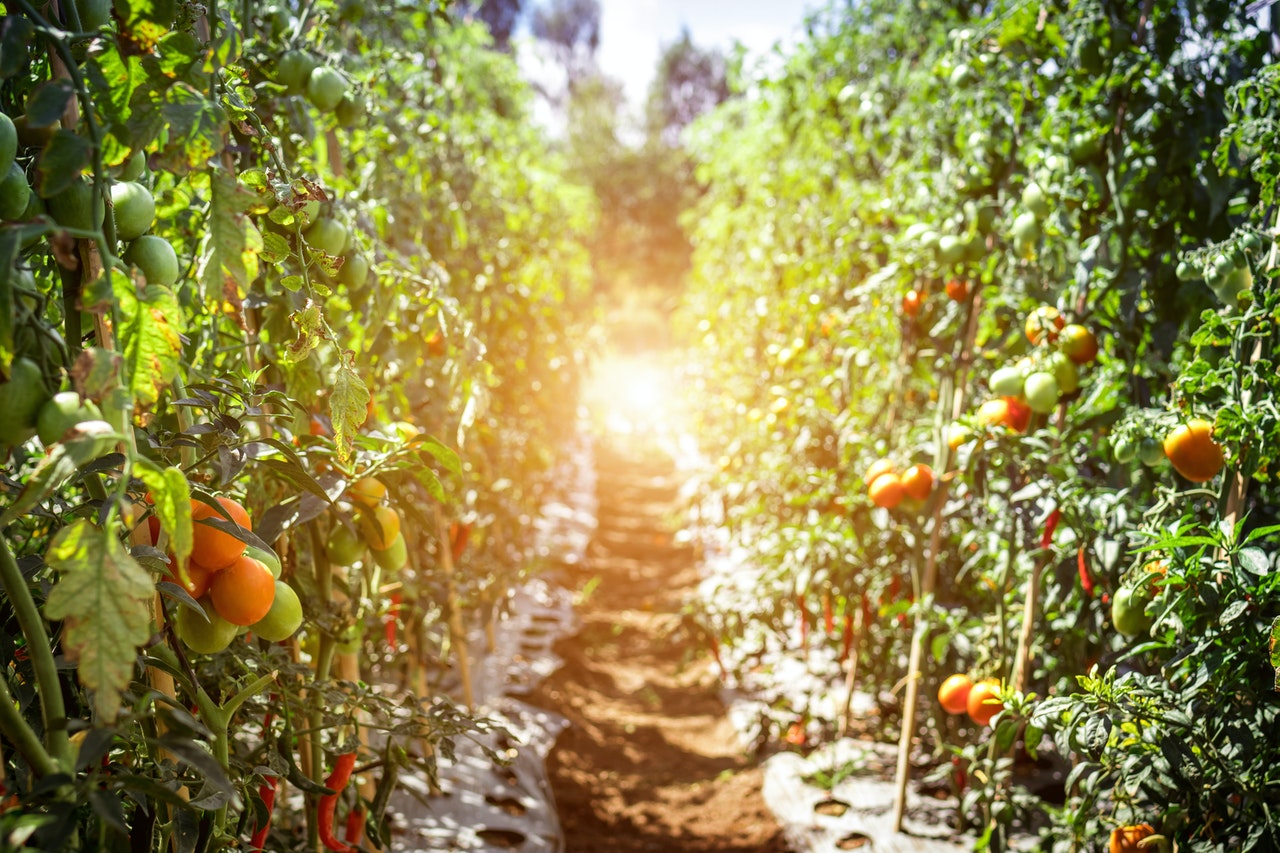Since tomatoes develop deep roots and can utilize water from deeper soil layers, it is advisable to till the soil to a depth of 40 cm. If no winter or early spring cover crop has been grown in the area designated for tomato cultivation, the soil should be deeply plowed in the fall (to a depth of 40 cm).
In the spring, the furrows are closed by disking, and the soil is tilled to a fine or powdery texture to a depth of 10 – 15 cm. It’s important to ensure that no rainfall occurs between tilling and the creation of planting mounds (beds). If rainfall does occur, it can deteriorate the soil’s structure and texture, leading to soil compaction and making it difficult to form the planting mounds or beds. Sowing seeds or planting seedlings on prepared beds is always preferable to flat surfaces because the soil on the beds warms up faster, and the entire planting layer has better aeration.
On large production areas, planting mounds are created using a special machine called a bed maker. Measurements should be taken on the plot to ensure the beds are as level as possible, especially the first one, as each subsequent bed will align with it. The height of the bed should be between 15 – 25 cm, and the width of the bed depends on the type of PVC film used. For single-row film, with a width of 120 cm and a hole spacing of 20 cm, the bed’s top width should be 30 to 50 cm. For double-row film, with a width of 130 cm and a hole spacing of 30 cm, the bed’s top width should be 40 to 60 cm.
Drip Irrigation
Drip irrigation lines are installed during the creation of the beds, before laying the PE film, and this process is automated. The bed maker has holders for the rolls of irrigation tubing. The irrigation tubes are connected to the main water line (polyethylene pipe) using connectors with valves on one side of the bed. A knot is tied at the other end to prevent water from leaking out.
The use of polyethylene (PE) film as mulch in vegetable farming has multiple advantages, including for tomato cultivation. Black PE film is most commonly used, but transparent (clear) and white (white on one side and black on the other) films are also utilized. Films in other colors (brown, yellow, silver, green) have less common applications.
Advantages of Using PE Films:
- Earlier Harvest: The elevated soil temperature under the PE film leads to more intensive growth and earlier harvesting. Using black mulch can result in a harvest 7 to 14 days earlier, while transparent mulch can advance it by up to 21 days.
- Reduced Evaporation: Evaporation is reduced under the mulch, resulting in higher and more consistent soil moisture compared to uncovered soil. While mulch helps retain moisture, it is essential to place drip irrigation lines underneath the film for successful cultivation.
- Weed Suppression: Using black or black-and-white mulch prevents sunlight from reaching the soil, inhibiting weed growth and development. Weeds may sprout under transparent mulch, but the high temperature under the film prevents their further development.
- Reduced Nutrient Leaching: As drip irrigation is commonly used under the mulch, necessary nutrients can be delivered close to the root system through fertigation. This reduces nutrient leaching into deeper soil layers and groundwater during heavy irrigation or rainfall.
- Reduced Soil Compaction and Crust Formation: The soil under the film remains loose and aerated because traffic is limited to the spaces between the film strips, and heavy rainfall does not disrupt the soil structure. The roots receive sufficient oxygen for growth and development, and microbial activity is adequate in such soil.
- Cleaner and Healthier Produce: The produce from mulched crops is cleaner and less prone to attacks by plant pests due to the lack of soil contact. When the soil is not covered, fruits (such as pickling cucumbers or strawberries) develop on the ground, which promotes disease development. During heavy rains, soil particles can splash onto plants or fruits, reducing their quality.
- Intensified Growth: The covering film is almost impermeable to carbon dioxide, which is necessary for photosynthesis. As CO2 levels increase under the impermeable cover, it escapes through the openings where the plants are planted, enhancing photosynthesis intensity when it comes into contact with the leaves.
The main disadvantages of using PE film are its removal and disposal, as well as the higher initial investment required.













































